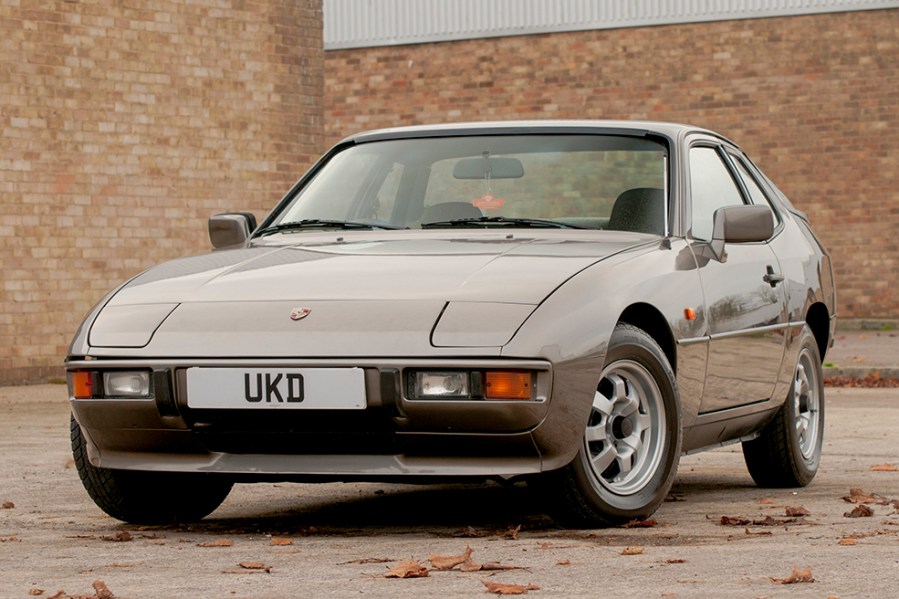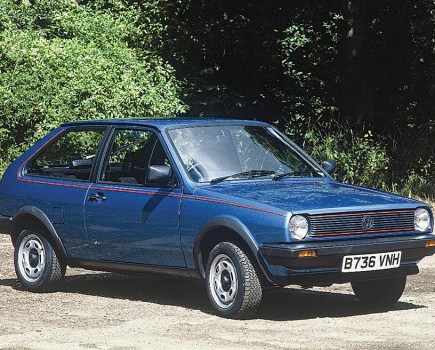You don’t have to spend a fortune to secure a great example of an interesting classic car. Here are our favourite picks under £5000
Words: Simon Jackson, Jeff Ruggles, James Howe, Paul Wager, Joe Miller, Phil Weeden
You don’t need us to tell you that classic cars aren’t as affordable as they once were. However, it needn’t cost a fortune to get behind the wheel of a useable and rewarding old car. Picking a popular, established model ensures excellent parts support and often a thriving club community to help you as you strive to keep your pride and joy in the best shape possible.
We’ve picked a range of respected classic cars, all of which are currently available for a sensible budget of £5000 or less, and each offer something different. While they all guarantee an inexpensive route into classic car ownership for those who are new to it, they also provide a tried and tested option for lifelong aficionados looking for their next historic vehicle.
Rover P6
The Rover P6 was first revealed in October 1963. Its advanced, safety-conscious design with panels hung on a steel skeleton was considered ahead of its time, and along with the Triumph 2000, it pioneered a new breed of 2-litre compact executive cars. As if to confirm its importance, it was crowned as the inaugural European Car of the Year in 1964.
At launch, the 2000 was offered only in single carburettor guise, but a twin-carb 2000TC version joined the range in 1966. Things were ramped up even more when the automatic-only V8 – the 3500 – arrived in 1968, and in 1970 the range was facelifted with a new bonnet and grille, new rear lights and revised interior trim.
We’d have to wait until the following year for the manual V8 3500S model, and in 1974 the four-cylinder engines were enlarged to 2.2-litres. The growling V8 was dropped in 1976 due to the arrival of the Rover SD1, but the 2200 models continued on until 1977.
The P6 remains something of a bargain, offering a whole lot of classic for the money. According to our own recent market analysis, £5000 is a realistic budget for a good 2000 model. That said it is possible to pick a P6 up for £3000, and conversely possible to spend five figures on the V8 model or very best four-pot cars.
The state of what’s under those bolt-on panels is of upmost importance. A simple way to check for rot is to open the rear doors to assess the D-posts; if they show signs of trouble, chances are the rest of the chassis is in the same condition. A rusty bulkhead should also raise an alarm.
VW Golf GTI Mk5
One of our favourite classics is the original Golf GTI, but values of really nice Mk1s are now well over the £10,000 mark. Values for the Mk2 version are heading in a similar direction, while the Mk3 and Mk4 GTIs lack the same sparkle.
As VW fans will know, however, the GTI regained its sparkle for the Mk5 generation when a turbo was strapped to the EA113 motor for a 200bhp result. It will no doubt make you stop and consider your own advancing years when you realise that the Mk5 GTI is now 20 years old, having been launched in late 2004.
Featuring independent rear suspension for the first time in the Golf, the Mk5 was an all-new design and still feels modern today, VW boasting a bodyshell some 80 per cent more rigid than the Mk4. It’s one of those cars which is hovering in the twilight zone between anonymous used car and sought-after modern classic, meaning that prices vary wildly, but a budget of £5000 should be enough to secure a really nice example.
Naturally the turbo engine made the car a favourite for modifying by the ‘Dubbers’, so search out a standard one if you can and avoid the DSG dual-clutch auto which in its early guises could be troublesome, especially without regular fluid changes. VW’s curious decision to leave a piece of waterlogged foam inside the top of the front wheelarches means many Mk5s have crusty front wings but budget to have this sorted out by a professional bodyshop and you’ve got a really nice car which should certainly give you your money back when you move on in a few years, having realised the Golf R is now within reach.
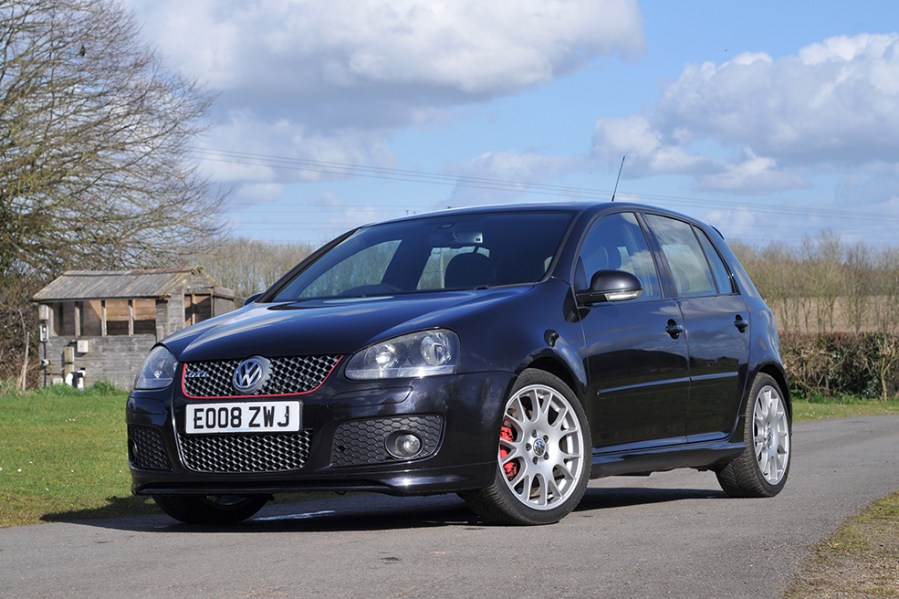
Mercedes W124
The W124 saw bulletproof Mercedes dependability perfectly blended with some welcome modernity to create one of the ultimate classic cars today. Its Teutonic styling (penned by the legendary Bruno Sacco) is timeless and there’s an infinite choice of models to suit most tastes.
The W124 shared much of its suspension with the smaller 190, coil springs up front and a multi-link arrangement at the back. It bestows this mighty Merc with a wonderful blend of cossetting ride and yet handling that’s agile enough to not completely lose itself along a twisty road.
The equally restrained interior is hewn from granite, with an ergonomically effective fascia and wonderfully comfortable seats. An early, pre-airbag model shouts a bit more ‘traditional’ Mercedes to me than the later cars with their white indicator lenses.
Much like its W123 predecessor, it’s corrosion that’s the biggest bugbear for these cars. Because of their dependability, many Mercs of this era have covered hundreds of thousands of miles, all year round and in all weathers. The British climate can take its toll, and has written off many a W124 of this era. Finding a good one, therefore, is worth the wait, and certainly worth paying the premium.
So, while you can still technically buy a W124 for a couple of grand, paying a bit more to get one in the best possible condition will be the wiser long-term move. Keep on top of that rust-proofing – the mechanicals will last forever if properly maintained.
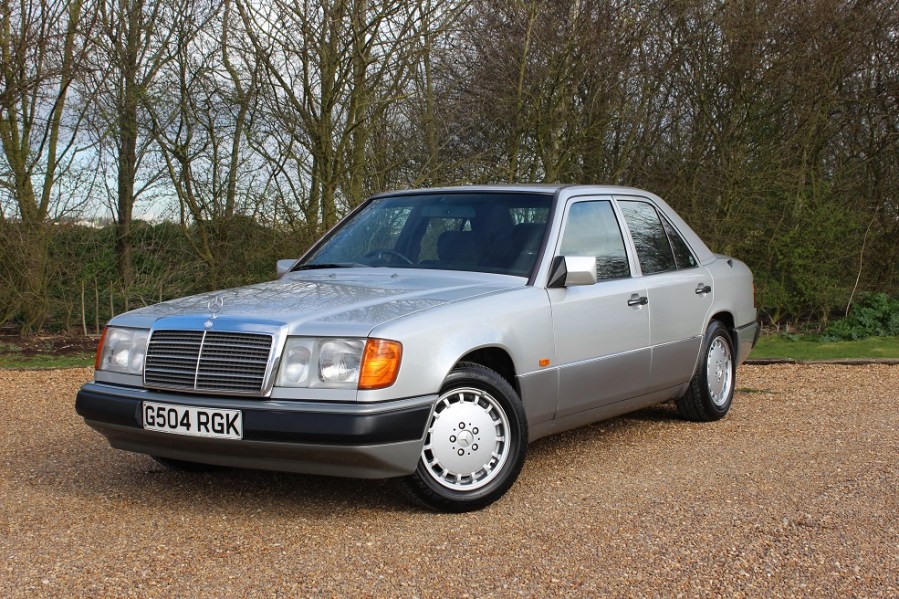
Porsche Boxster (986)
The 986 Boxster is now probably the most attainable Porsche of all, and yet can be almost as quick as the 911. It’s also historically significant; back in period, a struggling Porsche urgently needed a new sports car that could also share many parts with the next-generation 911. That’s exactly what the Boxster became, to great acclaim and sales success – so much so it’s commonly credited with saving the marque.
Early cars had a new 2.5-litre mid-mounted flat-six, which produced 204bhp and meant 0-60mph in 6.5 seconds – decent but not mind-blowing. However, this was countered by superb handling, weight distribution, brakes and steering, as well as being comfortable and affordable. In any case, Porsche upped the capacity to 2.7-litres in 1999, as well as introducing the new six-speed S with its 3.2-litre, 250bhp motor that delivered 162mph and 0-60mph in 5.9 seconds. The S may have been £8000 more than the 220bhp 2.7 model, but was still considerably cheaper than the 911 it was approaching in performance terms. A facelift came in 2002, recognisable by a change from a plastic to a glass rear screen and clear indicators.
When buying, problems include the rear crankshaft oil seal leaking, allowing oil onto the clutch. It’s a gearbox-off job, as is replacing the notorious intermediate shaft bearing (IMS). This is a sealed, greased bearing, but the grease can dry up, causing the cam chains to float and threatening the engine – check it’s been done.
However, the Boxster’s dynamic ability and depth of engineering make it a bargain at this price. An S might be a stretch, but a good base car is within reach. Surely they can’t stay this attainable for much longer?

MG Midget
The MG Midget arrived in 1961 as MG’s re-entry into the world of no-frills sports car ownership. Derived from the Austin-Healey ‘Frogeye’ Sprite already built at Abingdon and largely identical to the Mk2 Sprite launched a month earlier, the Midget used tried and tested mechanicals proven by the likes of the Austin A35 and Morris Minor, including the trusty A-Series engine. All this made it affordable to run and maintain – qualities that continue to fuel its appeal to this day.
In a little over a year, the original 948cc engine was replaced by a larger 1098cc unit, while the Mk2 of 1964 brought with it further engine tweaks, exterior door handles, an all-new dash layout and wind-up windows to replace the old side screens. From 1966 the Midget got the 1275cc A-Series, with the sought-after ‘round wheelarch’ variant arriving in 1972.
It was all change in 1974 though, as the arches reverted back to the squared-off style and US federal regulations dictated the fitment of Bayer Bayflex ‘rubber’ impact bumpers in place of the chrome items. There was also the controversial switch to the 1493cc unit used by its Triumph Spitfire rival, which would power the Midget until production ended in 1979.
Given the Midget’s simplicity of the Midget, many enthusiasts enjoy buying something in need of TLC and tinkering away at their leisure. Any chrome-bumper cars within our budget are likely to need work, but £5000 should still be enough to buy a tidy 1500 if you’re patient, and projects begin from around £2000.
Rover Metro
It wasn’t so long ago that Metros of all kinds were found in the bargain basement end of the classifieds, but with increasing scarcity and the ever-rising prices of its Mini cousin, the iconic 80s and 90s hatchback has seen an uptick in value over the past few years. Earlier Austin and MG-badged models can be found below our £5000 threshold but the best often change hands for much more: instead, it’s best to focus on later Rover examples if you want a low-mileage, well cared-for survivor.
A search of the classifieds uncovered all manner of great choices well below budget, from an extremely low-mileage basic-spec five-door Rover 100 to a slightly leggier Rover Metro GSi. The sought-after Metro GTi 16V also comes in under budget, with ratty projects starting at around £2000 and more presentable examples coming in around budget. A happy middle ground is occupied by the later iteration of the Metro GTa (later known as the 114 GTa), a car which combines the sporty look and feel of a GTi but with an 8-valve 1.4-litre K-series under the bonnet.
Whichever you choose, a Metro makes for a fun-to-drive, cheap-to-run, DIY-friendly classic. Much more than a cheap Mini alternative, it’s a fantastic classic in its own right.
Volkswagen Beetle
It’s little wonder that the Volkswagen Type 1 – never officially called ‘Beetle’ – has remained such a popular classic car over the decades, helped by the fact that VW built more than 21 million over a huge 65-year production run.
The pre-’58 examples – known as ‘split’ or ‘oval’ after the shape of the rear window – are best left to hardcore VW fans, while the pre-’68 cars with their sloping headlights are also coveted by enthusiasts. However, the post-’68 cars with the square-section bumpers, larger rear lamps and upright headlamps can be found for under our £5000 ceiling. With their 12-volt electrics, better lighting and other improvements they’re also easier to live with.
Buyers new to the air-cooled VW scene can be easily confused by two main departures from the original: the 1302, launched in 1971 which featured MacPherson strut front suspension and double-jointed rear suspension, then the 1303 which replaced it in 1972 and used the 1302 chassis but added a restyled body with bulbous wraparound front screen and plastic dashboard.
Produced in anticipation of safety regulations (which were never enacted) in the US market governing the distance between front seat occupants and the screen, the 1302/1303 with its larger front boot is more practical than the traditional Beetle but is less sought-after by fans of the original design and production ended in 1975. An ‘S’ after the model name simply signifies the larger 1600cc engine.
In 1978, the last European Beetle saloon was produced, VW’s Mexican factory then supplying cars to LHD European markets until 1985. A trickle of privately imported cars continued to arrive here until production finally ended for good in 2003.
Perhaps the beauty of a classic car like the Beetle is that despite the variations over the years, the essence of the car very much remained. Owners have long performed upgrades of all kinds, backdating newer cars and extracting outrageous power from the air-cooled engine. With the almost unparalleled aftermarket support and fanbase that exists for these cars the world is your oyster. An entry-level, useable mid-’70s Beetle can be yours from around £4000.
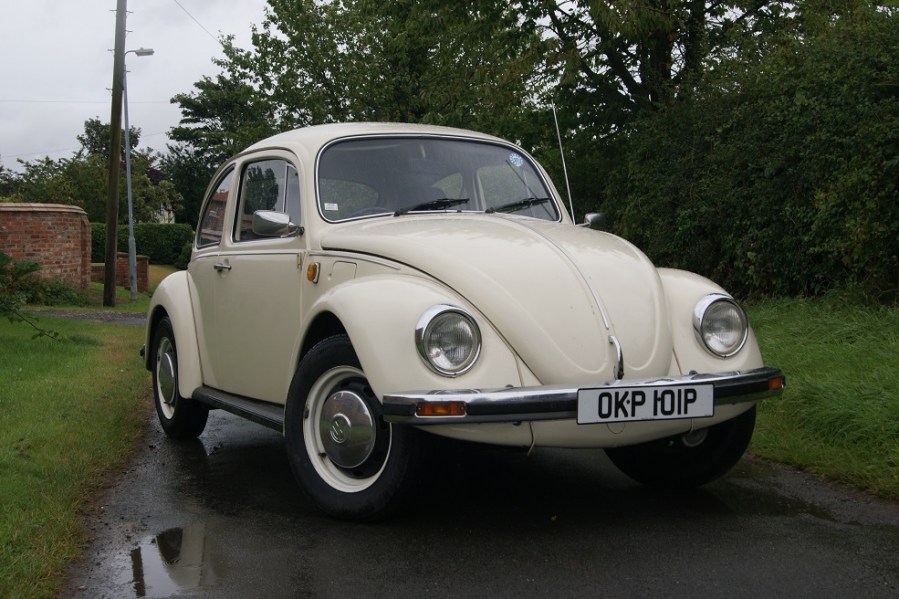
Porsche 924
The ‘transaxle’ offerings from Porsche spent a long time in the doldrums as enthusiasts shunned the front-engined cars for rear and even mid-engined models. That’s a real shame as there’s more to Porsche than just the 911. It is not an exaggeration to say that the 924 – launched in 1976 – is one of the most important ‘everyman’ cars in the Stuttgart manufacturer’s rich history, and is a car that saved the brand from extinction in many respects.
Much of the development was undertaken by Porsche, but the 924 was intended to wear a Volkswagen badge and was already quite a long way down the line by the time Porsche bought the design back. Launched in 1976, the 924 was subsequently evolved from its 2.0-litre origins with the 177bhp Turbo and 150bhp 2.5-litre 924S. The 944 of 1982 finessed things further still, and yet, arguably, Porsche finally got it absolutely right with the final model in the lineage – the 968.
Because the 924 was seen as a poor relation for such a long time, few received the care and attention lavished on their illustrious relations. But in the last decade or so the tide has turned, with enthusiasts seeing the benefits of ownership. Like all Porsche models, values have increased, meaning that you’ll likely need every penny of our hypothetical budget to secure a decent example of a 924 – and perhaps a 924 S – today. The 924 Turbo is out of reach, while a 944 is just about possible if you’re prepared to get your hands dirty.
Triumph Herald
The versatile Herald remains one of the bargains of the classic car scene. Launched in 1959 complete with glamourous tail fins and a 948cc engine, the Michelotti-penned Herald was initially available as saloon and a coupe. However, the separate chassis afforded great versatility, with the popular convertible version arriving in 1960, and three-door estate and van versions later offered.
Initially the Herald was a commercial flop, having to contend with countless warranty claims and the almost simultaneous arrival of BMC’s Mini and Ford’s Anglia. But continuous development and the arrival of the 1147cc Herald 1200 in 1961 got it back on track. A more powerful upmarket version, the Herald 12/50, was offered from 1963. From 1967, the 12/50 was dropped and a new 13/60 version was sold alongside the 1200, featuring a bigger 1296cc engine and a revised front end that looked similar to that of the six-cylinder Vitesse. The final cars were made in 1971.
The Herald’s simple construction and the famed flip-forward bonnet made it a DIY enthusiast’s dream, aiding lower running costs and, in later years, assisting the restoration process. Many buyers gravitate towards the 13/60 of the late ’60s for its more powerful engine, but the earlier models have a certain charm too. Exceptional Convertibles can change hands for five figure sums, but our £5000 should afford us plenty of choice when it comes to saloons and the odd estate, while recent auction results suggest a convertible is possible if you don’t mind performing a little TLC.
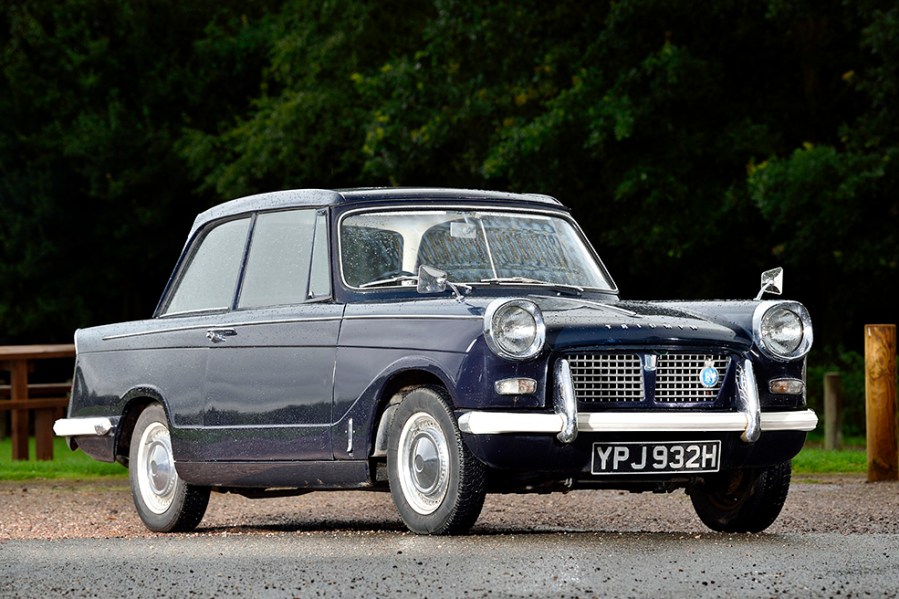
BMC 1100 & 1300
Having excelled with the Mini, genius designer Alex Issigonis’ next task was to pen a bigger car to plug the gap between the sub-1.0-litre A40 and Morris Minor models, and the much larger 1.5-litre Farina saloons. The result was the BMC 1100/1300 range, first launched in 1962 and often referred to by its ADO16 model code.
The ADO16 played on the Mini’s basic formula of a wheel-at-each-corner and a transversely mounted A-Series engine driving the front wheels, but added more space and greater comfort, the latter thanks in no small part to its Alex Moulton-designed Hydrolastic suspension. Unlike with the Mini, however, BMC supremo Leonard Lord insisted that the body be properly styled by Italian firm Pininfarina. Clearly the balance between the Issigonis’ ideals and the concessions to styling was about right, for the ADO16 hit the ground running.
The car was first launched as the Morris 1100, but in complex BMC fashion, badge-engineered versions came thick and fast. Before the final car, a Vanden Plas Princess 1300, rolled off the line in June 1974, we also saw Austin, MG, Riley and Wolseley-badged versions. The ADO16 could be humble, sporty or luxurious, while the larger 1275 engines offered from 1967 improved performance. There was also a practical estate, offered from 1966. Underlining its importance, the ADO16 range was crowned Britain’s bestselling car between 1963 and 1966, and then again from 1968 to 1971. A staggering 2.1 million were made before production ended.
The AD016 quickly gained a reputation for rusting away, but its practicality, simplicity – not to forget strong spares and club support – means it can make for a great affordable classic. Values have climbed as fewer examples have survived and models like the MG and 1300 GT are now out of budget, but £5000 should easily buy you a basic 1100 or 1300 in good order.
Jaguar XJ
Jaguar’s most successful series of saloons began its career in October 1968 with the unveiling of the original XJ6, a model designed to eventually replace the company’s entire saloon car line-up. Critically acclaimed right from the off, 13,729 XJs were sold in 1969 alone – more than twice the number of 420Gs sold during that model’s entire four-year career.
The Series 1 car gained a V12 variant in 1972, before the Series 2 arrived in late 1973 with its higher front bumper and revised interior. A subtle Pininfarina redesign accompanied the Series 3 of 1979, with its replacement – the squarer XJ40 model – launched in late 1986 (though the V12 Series 3 remained in production until 1992).
The more curvaceous look of the earlier cars returned for the XJ40-based X300 model of 1994, while the X308 launched in 1997 saw the XJ6 and XJ12 nomenclature changed to XJ8, reflecting the new V8 engine under the bonnet. Remarkably, the XJ would remain a fixture until 2019, first with the aluminum-bodied X350 and X358 models of 2002 and 2007 respectively, then the radically different Ian Callum styled X351 from 2010.
Any Series XJ will be a project with our £5000 budget, and the XJ40 is getting increasingly tricky too as they are quite rare in serviceable condition now and have a good enthusiast following. However, X300 and X308 are within scope – rough ones can be found for under £2000, while £5000 buys a nice one if you buy on condition rather than model.
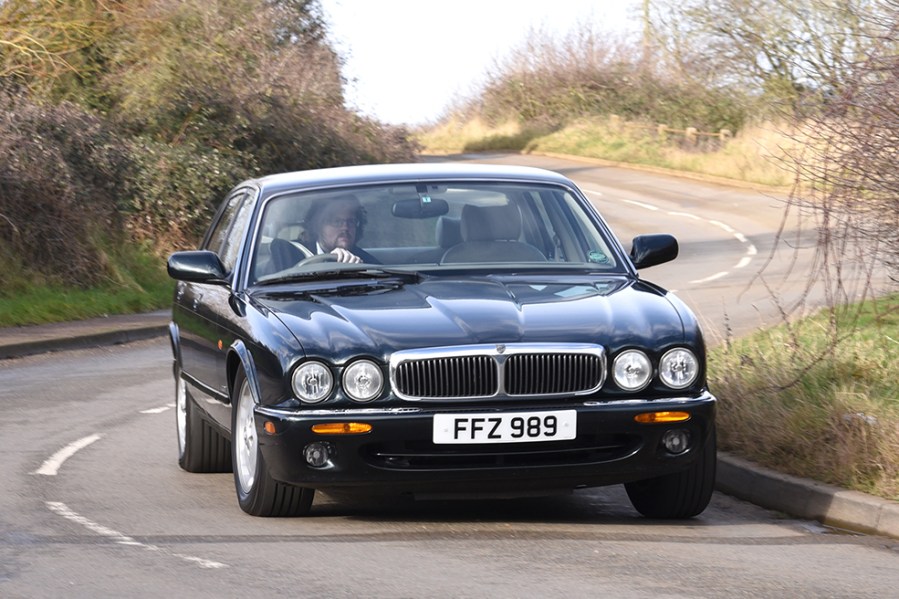
Ford Consul Corsair
Following the demise of the unpopular Consul Classic, the Consul Corsair arrived in 1963 as a mid-size model to fit between the smaller Cortina and the larger Zephyr and Zodiac models. The Corsair’s unusual arrow-shaped snout gave it a very distinctive appearance that resembled the contemporary Ford Thunderbird, but it was otherwise conventional and was essentially a long-wheelbase reskin of the Cortina.
Initially available in two- or four-door guises, the car was initially offered with the 60bhp 1500 Kent engine, with the sportier Corsair GT getting a tweaked 78bhp unit. That was until September 1965, when the Corsair adopted new Essex V4 engines; noisier and rougher, they made of mockery of the “seen but not heard” marketing tagline.
The initial 1.7-litre version produced 73bhp and was later joined by a 92bhp 2.0-litre in 1966 – a year that saw the Abbot estate and Crayford convertible versions appear. These were followed in 1967 by 2000E with its vinyl roof and plush features, but the Corsair was never a big seller. It was killed off in 1970 with just over 330,000 built in total.
For years, you couldn’t give a Corsair away. However, in later life it has been discovered by a growing number of new fans. The rising prices of other Blue Ovals have rubbed off on it too, so in recent years these cars have come to be more widely appreciated. You can pick up a basic Corsair for our £5000 budget, but expect GT and E models to carry a slight premium, and for a convertible you’ll pay considerably more.
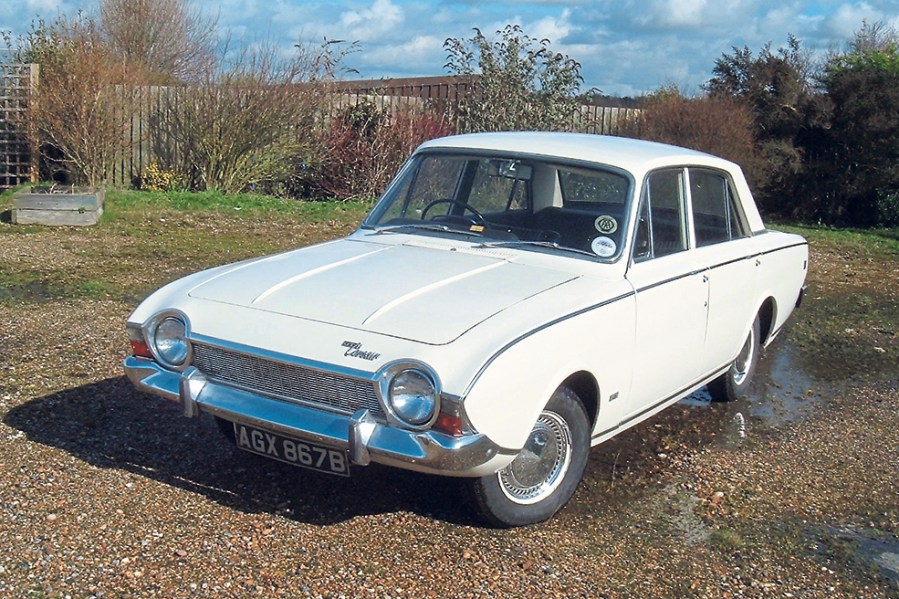
MGB GT
The MGB has long been a default cheap classic choice, but with very good reason. Fun to drive, easy to work on and with incredibly comprehensive parts and specialist support, it’s a model that suits beginners and seasoned enthusiasts alike. Another major reason for the MGB’s success on the classic market is its neat, well-proportioned styling that looks at home everywhere from a local pub meet to a prestigious concours lawn. The design arguably looks its best in Pininfarina-designed hard-top GT form, and also drives better thanks to welcome extra rigidity.
Introduced towards the end of 1965, the MGB GT arrived after the original soft-top version and was hugely successful in period, offering something approaching Jaguar E-Type character for a much lower price. It was practical too, with the hatchback rear end allowing space for luggage and a small rear seat.
It’s not the fastest classic sports car around – you’ll have to upgrade you budget to secure a larger-engined MGC or V8 model – but the B-series four-cylinder is eager enough to have fun with, and is very reliable given proper maintenance. It also sounds great (as sports cars should) and responds well to some light tuning if that’s of interest.
Previously there was a big difference in price between models with rubber and chrome bumpers, with the former offering a decent discount for those on a budget. That gap has closed a bit in recent years, but you’re still more likely to be looking at later models on our £5000 budget, which should be enough to secure a great useable car with a few small niggles to get stuck into. Attitudes towards rubber bumper examples have matured in recent times, but if you don’t like the plastic-faced look, bear in mind that many examples have already been converted to chrome items.
Jaguar X100 XK8
The XK8 was the start of a new era for Jaguar – here was a stylish, powerful, luxurious coupe that, unlike its XJS predecessor, needed no excuses made for it. Quality was far beyond what we were used to from Jags of old, the new AJV8 engine was a smooth, revvy, muscular-sounding gem of an engine that – once the plastic timing chain tensioners and water pumps were ditched and the Nikasil liners were removed – was also superbly reliable. The typical Jaguar blend of comfort and cornering remained, and the go-faster XKR took the fight to the likes of Porsche and Maserati on a wave of supercharger whine.
While you can buy an XKR for £5000, you’ll be shopping at the bottom end and will likely get a high-mileage project car. Instead, we’d advise setting your sights on the naturally aspirated XK8. For this budget, you’ll have your choice of coupe or convertible, an earlier 4.0-litre car or one of the facelifted 4.2s, with enough for sale that you can be picky with spec and colour.
There’s excellent club support from the likes of the Jaguar Enthusiasts’ Club as well as parts backing from specialists like SNG Barratt. Whether you’re touring through Europe, taking a spirited drive on the weekends, or simply want a car to cruise to and from work in that will make you feel special every time you sit in it, the XK8 is a fantastic choice. What’s more, stick a private plate on it and your neighbours will think you spent £50,000 rather than £5000…


